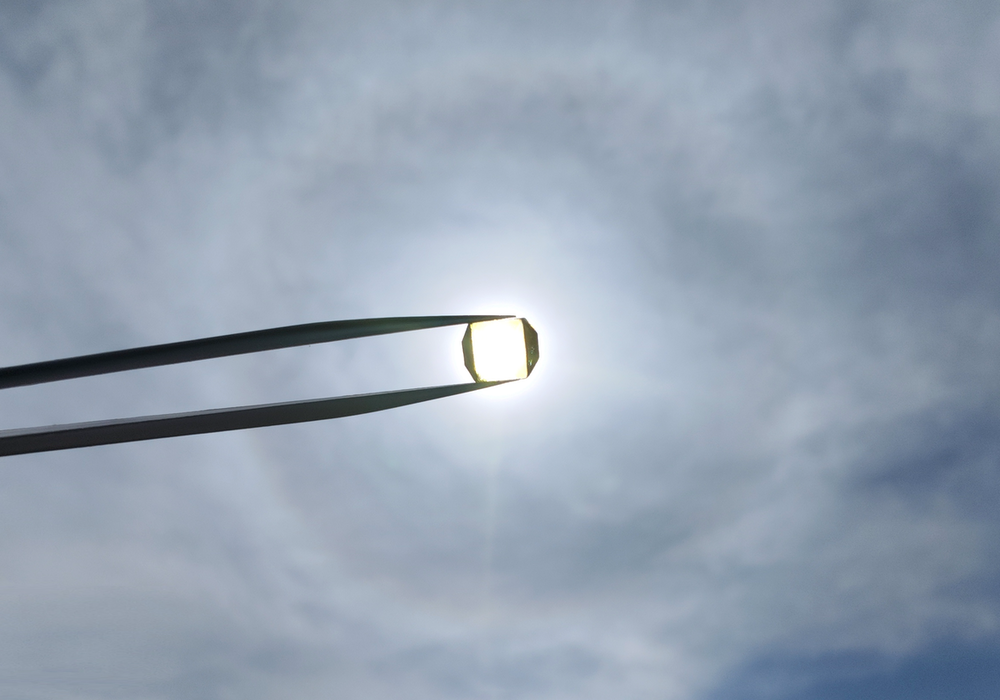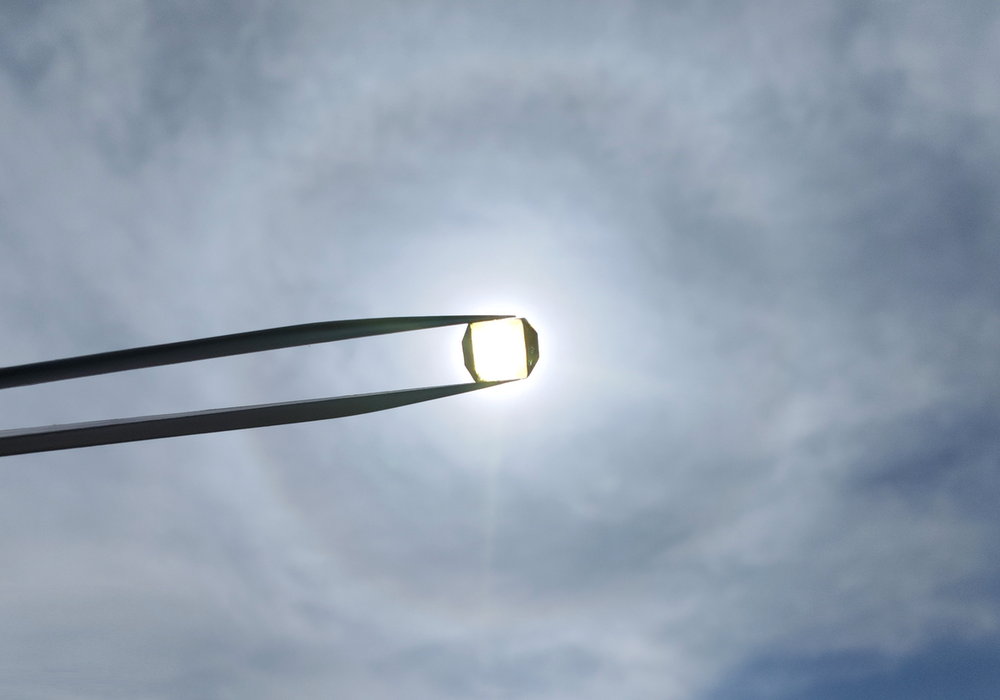A “Green” Quantum Sensor
No longer the realm of science fiction, quantum sensors are today used in applications ranging from timekeeping and gravitational-wave detection to nanoscale magnetometry [1]. When making new quantum sensors, most researchers focus on creating devices that are as precise as possible, which typically requires using advanced—energy-hungry—technologies. This high energy consumption can be problematic for sensors designed for use in remote locations on Earth, in space, or in Internet-of-Things sensors that are not connected to mains electricity. To reduce the reliance of quantum sensors on external energy sources, Yunbin Zhu of the University of Science and Technology of China and colleagues now demonstrate a quantum sensor that directly exploits renewable energy sources to get the energy it needs to operate [2]. The new device could broaden the use of quantum sensors as well as help in significantly reducing the energy costs of quantum sensors in existing applications.
Today quantum technologies are largely found in research laboratories, which have virtually unlimited access to energy. A typical device operates at cryogenic temperatures and requires powerful lasers, microwave-frequency amplifiers, and waveform generators. Such a device can consume thousands of watts and operates 24 hours a day. One way to reduce those energy costs is by making sensors from systems that don’t require cryogenic cooling, such as diamond defects known as nitrogen-vacancy (NV) centers. However, such sensors still require a powerful laser, which can easily consume 100–1000 W, and a microwave supply that needs around 100 W. Researchers are also working on miniaturizing sensors, a process that typically reduces power consumption. But current versions of these smaller sensors still get their power from the grid [3].
Zhu and colleagues take a different approach by developing a quantum sensor that generates its own power from a renewable energy source, in this case solar energy (Fig. 1). The team’s sensor is made from an ensemble of NV centers in diamond, a well-established solid-state quantum-sensing platform that can operate over a wide range of temperatures (0–600 K), pressures (up to 40 GPa), and magnetic fields (0–12 T).
Nitrogen-vacancy centers are defects that are typically created by implanting nitrogen ions into a diamond lattice. The centers confine charge carriers—such as electrons or holes—creating a localized electronic state. Users can read out the spin of this state by exciting the defect with a laser. The NV center then emits radiation, via fluorescence, whose intensity correlates with the system’s spin. Researchers typically use a green laser for this excitation, as that color of light produces the strongest fluorescence in the system (the emitted radiation is red).
For use in quantum applications, NV centers are ideal because they operate at room temperature, so no cooling apparatus is required. They do however require a laser to excite the NV center. They also require a magnetic-field generator and a microwave-frequency amplifier: the NV center’s fluorescence frequency can be split in two by applying a bias magnetic field, and the two resulting emission peaks can be accessed by sweeping the microwave amplifier through these frequencies. The exact positions of these peaks encode information about any changes in the ambient magnetic field with respect to the bias as well as changes in the device’s temperature or strain.
Zhu and colleagues’ device does away with both the laser and the amplifier. Rather than using laser light to excite the NV center, the researchers use sunlight, filtering it with an optical band pass filter so that only green wavelengths are incident on the NV center. They also use a so-called flux concentrator made of iron to amplify Earth’s magnetic field to around 100–300 G. At those magnetic-field strengths, the energy structure of NV centers allows for all-optical detection of changes in the ambient magnetic field just by monitoring the brightness of the device’s fluorescence. This ability allows the team to run a sensor without a separate magnetic-field generator or a separate external microwave-frequency amplifier.
The team’s device requires just 0.1 W to operate—that power is needed to run a low-energy-consumption photo detector for the spin readout. The researchers show they can obtain a reasonable sensitivity for detecting ground-level changes in Earth’s magnetic field induced, for example, by the presence of nearby power lines or trains. This sensitivity—less than 1 nT/sqrt(Hz)—is on par with that achieved for diamond that has the natural occurring concentrations of carbon isotopes—diamond typically contains two isotopes, C12 and C13. Higher sensitivities have been achieved with isotopically pure, lab-grown diamond, with the best being around 1 pT/sqrt(Hz)—a level suitable for detection of changes in biological magnetic fields in the heart or in skeletal muscles. I envision that they could reach such a sensitivity level by increasing the energy of the sunlight that enters the device or by customizing both the isotopic content of the diamond and the NV-center concentration.
This demonstration is a first step toward powering quantum technologies directly with renewable energy, eliminating the need for them to connect to an external power source. In doing so, Zhu and colleagues show that their device has a much higher energy efficiency than similar grid-connected devices.
References
- C. L. Degen et al., “Quantum sensing,” Rev. Mod. Phys. 89, 035002 (2017).
- Y. Zhu et al., “Sunlight-driven quantum magnetometry,” PRX Energy 1, 033002 (2022).
- F. M. Stürner et al., “Integrated and portable magnetometer based on nitrogen-vacancy ensembles in diamond,” Adv. Quantum Tech. 4, 2000111 (2021).





